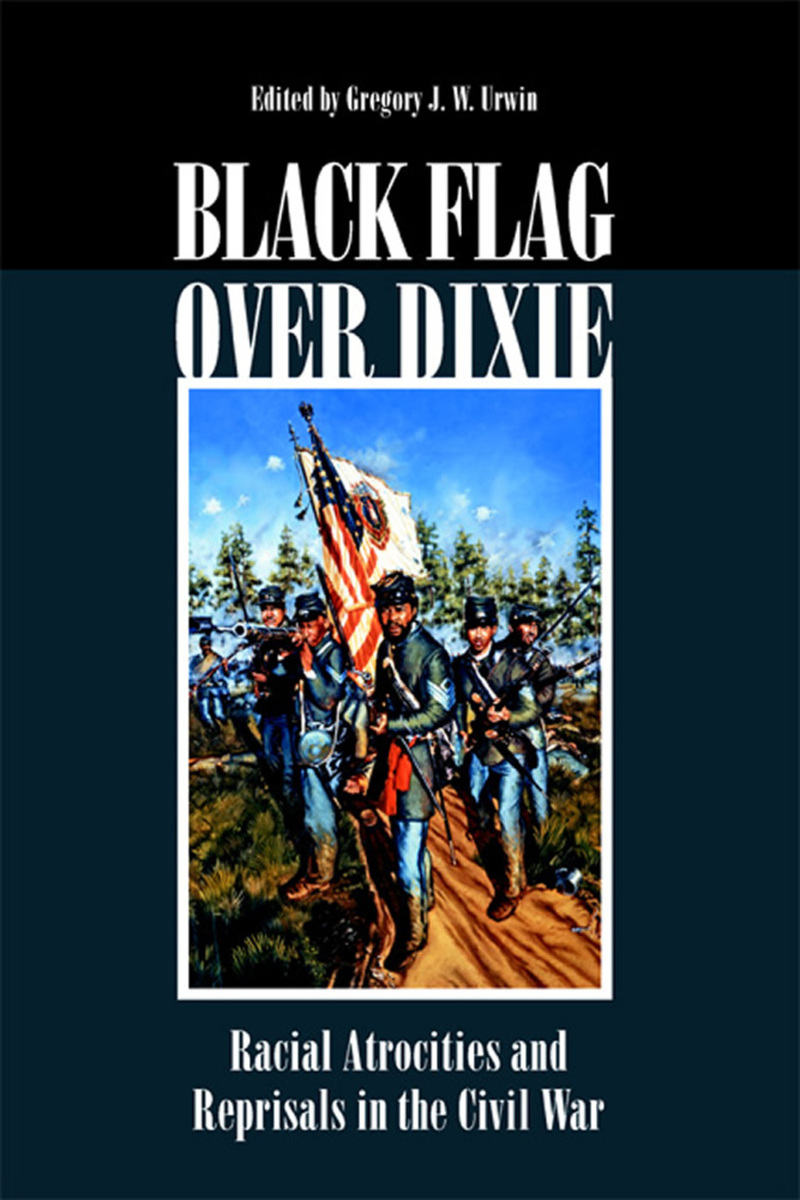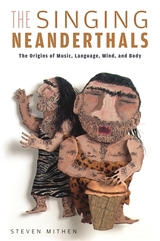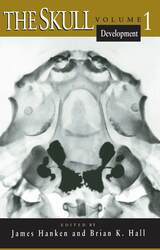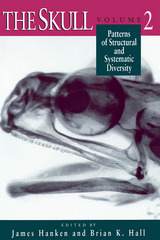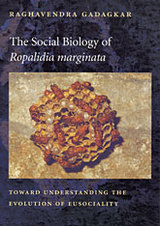Paper: 978-0-8093-2678-5 | eISBN: 978-0-8093-8828-8
Black Flag over Dixie: Racial Atrocities and Reprisals in the Civil War highlights the central role that race played in the Civil War by examining some of the ugliest incidents that played out on its battlefields. Challenging the American public’s perception of the Civil War as a chivalrous family quarrel, twelve rising and prominent historians show the conflict to be a wrenching social revolution whose bloody excesses were exacerbated by racial hatred.
Edited by Gregory J. W. Urwin, this compelling volume focuses on the tendency of Confederate troops to murder black Union soldiers and runaway slaves and divulges the details of black retaliation and the resulting cycle of fear and violence that poisoned race relations during Reconstruction. In a powerful introduction to the collection, Urwin reminds readers that the Civil War was both a social and a racial revolution. As the heirs and defenders of a slave society’s ideology, Confederates considered African Americans to be savages who were incapable of waging war in a civilized fashion. Ironically, this conviction caused white Southerners to behave savagely themselves. Under the threat of Union retaliation, the Confederate government backed away from failing to treat the white officers and black enlisted men of the United States Colored Troops as legitimate combatants. Nevertheless, many rebel commands adopted a no-prisoners policy in the field. When the Union’s black defenders responded in kind, the Civil War descended to a level of inhumanity that most Americans prefer to forget.
In addition to covering the war’s most notorious massacres at Olustee, Fort Pillow, Poison Spring, and the Crater, Black Flag over Dixie examines the responses of Union soldiers and politicians to these disturbing and unpleasant events, as well as the military, legal, and moral considerations that sometimes deterred Confederates from killing all black Federals who fell into their hands. Twenty photographs and a map of massacre and reprisal sites accompany the volume.
The contributors are Gregory J. W. Urwin, Anne J. Bailey, Howard C. Westwood, James G. Hollandsworth Jr., David J. Coles, Albert Castel, Derek W. Frisby, Weymouth T. Jordan Jr., Gerald W. Thomas, Bryce A. Suderow, Chad L. Williams, and Mark Grimsley.
Gregory J. W. Urwin is a professor of history and associate director of the Center for the Study of Force and Diplomacy at Temple University.
Black Flag Over Dixie is a polemic analysis of the overarching role that race played duringthe Civil War. Temple University professor of history Gregory J.W. Urwin assembles a
ti
disparate collection of essays that achieve a synergistic effect in refuting the reconciliationistvision of the Civil War as an honorable contest between chivalrous opponents. Urwin's slateof twelve prominent and heretofore unheralded historians examine purported Confederateand Union Army racial atrocities in each operational theater, including battles at Milliken'sBend, Poison Springs, Jenkin's Ferry, Fort Pillow, and Petersburg. The authors contend that the psychology of "whiteness" framed southern and northern conduct of the war and frequently manifested itself in racial atrocities. Although Confederate atrocities weremore frequent and larger, black soldiers retaliated when presented with an opportunity.Myriad cascading effects emanated from racial atrocities; however, two effects were mostprominent. First, Radical Republicans incorporated reports of racial atrocities into their"bloody shirt" propaganda to advocate a "hard war" strategy against the South. Secondly,Union and Confederate governments failed to establish and enforce coherent policies to address racial atrocities. The lack of policies emboldened southern insurgents during Reconstruction and also facilitated the North's abandonment of African Americans in exchange for reconciliation after the war.
Lincoln's Emancipation Proclamation and the introduction of black regiments threatened psychological, deep-rooted, white supremacist underpinnings and exacerbatedsouthern fears of slave insurrection. The presence of black soldiers also provided southern confirmation that the war was a cultural and social revolution designed to reshape the South. Consequently, engagements between Confederate and black regiments quickly escalated into "Black Flag" conflicts of no quarter given. Although the "Fort Pillow Massacre" was not the first or largest racial atrocity, reports of the massacre became tantamount toa rallying cry of "No Quarter" for black soldiers and a Radical Republican demand for an escalation of the war. Following the "Fort Pillow" and "Poison Springs Massacres," black soldiers of the2"d Kansas Colored Voluntary Infantry Regiment retaliated by killing wounded Confederate soldiers at the Battle of Jenkin's Ferry on the Saline River. Simultaneously, Radical Republican Senator Benjamin R. Wade of Ohio framed apropaganda campaign around the"Fort Pillow Massacre" designed to marshal public will towards pursuing a hard war against the South.
Despite the "Fort Pillow Massacre" Congressional investigation and an eventual Union strategy of "Total War," the Lincoln administration failed to adopt a coordinated and coherent policy towards Confederate racial atrocities. Similarly, the Confederate administration failed to articulate a coordinated policy on the legal status of black soldiers.The failure of both governments to develop and disseminate coherent racial policies to their field forces signaled tacit approval of racial atrocities. Chad L. Williams' essay, "Symbols of Defeat: African American Soldiers, White southerners, and the ChristmasInsurrection Scare of 1865," argues that white Southerners' unrelenting disdain for blacksoldiers coupled with their acceptance of racial atrocities provided significant impetus for a southern insurgency during Reconstruction.
In his essay, "The Hard Hand of War: Union Military Policy Towards Southern Civilians, 1861-1865," Mark Grimsley provides a more comprehensive approach towardsthe role of racism in America. Grimsley asserts that racism is an American inheritance that has cast a very "Long Shadow" over America since its inception. Racial atrocities are not unique to the Civil War but are also evident in virtually every American conflict.Sheer utilitarian necessity rather than moral superiority forced the Union to field blackregiments. Consequently, this ingrained American racism enabled the North to quicklyforget both the contributions of black soldiers and southern racial atrocities in order to advance reconciliation.
Urwin has crafted an extraordinary book using essays of varying quality to effectivelyshatter the myth of the"Lost Cause" and portray the Civil War as a hotly contested socialrevolution. Several of the essays contained inBlack Flag Over Dixie appear deliberately vague in an attempt to stimulate discussion and further research. Mark Grimsley's concluding analysis on racism and reconciliation fuses the disparate essays together and invokes comparison to David Blight's seminal discussion of race, memory, and reconciliation in Race and Reunion: The Civil War in American Memory. Inevitably, Black Flag Over Dixie will invite comparisons and discourse on ongoing American militaryoperations in the current"Global War on Terrorism." Specifically, how does the American perspective on race inform its perception and conduct of the war?
In the not too distant past, almost all Civil War publications seem to have consisted of rehashes of selected major battles and leaders. Sadly, some scholars would like to see this genre return to those "good old days" and avoid such topics as slavery, women, internal political, dissention, (real) intelligence gathering, etc. However, the story of these "other Civil Wars" will not be denied.
This particular work looks at the subject of military racial atrocities during the Civil War; it is a collection of essays ranging from Albert Castel's 1958 article on the Fort Pillow massacre to works prepared specifically for this volume. The title refers to the traditional symbol for no quarter being offered. In a war about racism and slavery, the use of black soldiers, many of them former slaves, raised numerous issues in the opposing armies but especially about the treatment of black prisoners of war and their white officers. Some of the eleven chapters, such as Bryce Suderow's piece on the killing of black soldiers in the Battle of the Crater, seem exceptionally concise, but all of these contributions represent in depth research and balanced conclusions.
This book also has remarkable scope for such a compact work. Howard Westwood discusses the aftermath of the battle at Charleston made famous in the movie Glory and David Frisby joins Castel in looking at the Fort Pillow massacre. However, Anne J. Bailey, David J. Coles, Gregory J. W. Urwin, and Chad L. Williams look at far less-well-known incidents, such as the battles of Plymouth and Olustee, in Arkansas, Florida, North Carolina, and other theaters that have lacked adequate study. James G. Hollandsworth, Jr.'s contribution discusses the executions of white officers of black troops, and Mark Grimsley draws conclusions on the broad topic.
Black Flag Over Dixie does have limits that hopefully future volumes will address, as hinted at by some of the above essays. For example, Georgia's Colquitt's brigade had the distinction of fighting black soldiers in battle in Florida, South Carolina, and Virginia. How this unique experience affected the men of this unit from often anti-war North Georgia would make an interesting topic. The treatment of the largely Georgian black Forty-fourth United States Colored Infantry following the fall of Dalton, Georgia, in October 1864 deserves a place on any roster of Civil War racial atrocities. However, that list should also include the actions by black soldiers under the fanatical abolitionist Gen. Edward Wild in Wilkes County, Georgia, and elsewhere.
This reviewer looks forward to the volumes that will expand on the excellent work begun here, although they will have a tough act to follow.
It has become almost trite to note how popular scholarship and interest in the American Civil War remains, yet despite the cascade of works on facets of the war both obscure and renowned, Gregory Urwin has brought together a group of essays that explores a still nearly untouched aspect of this conflict. Black Flag Over Dixie is a compilation of twelve essays on the topic of Civil War racial atrocities, and provides a ready source for future explorations of this subject. The book supplements its text with twenty photographs and illustrations.
Urwin, a professor at Temple University and an award-winning author or editor of seven books on military history, has pulled together a fascinating examination of what he refers to as "the war's central cause and most convulsive issue." Urwin contends that the Civil War community's collective amnesia is an outgrowth of an intentional effort on the part of Southerners to ensure that their loss on the Civil War's battlefields could be redeemed in the aftermath. He notes that organizations such as the Sons of Confederate Veterans (SCV) and United Daughters of the Confederacy lobbied to ensure that a pro-Confederate history of the war was taught in Southern schools. In my years teaching military history at the United States Military Academy at West Point, I often was amazed at how successful that effort had been, as cadets from southern states almost uniformly identified simple "states' rights" as the seminal cause for the war, denying that slavery had any role.
With Black Flag Over Dixie, Urwin seeks to open the path to not only a fuller understanding of the war, but also of our nation. His effort makes a good start, but also highlights the limited scholarship to date. Of the twelve essays (including the introductory and concluding essays), only four represent new scholarship. The oldest essay is the 1958 Albert Castel piece, "The Fort Pillow Massacre," which is still among the best examinations of the evidence of that massacre, even given its age.
The Confederate treatment of the blacks in Union blue and their white officers is as varied as the different units and individuals who came into contact with the black soldiers. It is clear that there were those on both sides of the conflict who simply could not countenance the idea of blacks as soldiers. It is equally evident that the Lincoln Administration, albeit hesitantly and with fits and starts, came to recognize the benefits of the black presence in the ranks. Even if the United States Colored Troops (USCT) units never fought a single engagement, the fact that nearly two-thirds of their ranks comprised escaped slaves meant an equal loss to slaveholders in the rebel states. It is, therefore, hardly surprising that the South, which had gone to war to ensure the right to keep its black population subjugated, would find the thought of those same blacks under arms criminal.
The official Confederate position on the status of the black soldiers was constantly evolving. In December 1862, Jefferson Davis had ordered that any blacks captured under arms (and their officers) were subject to state laws regarding servile insurrection. However, as a practical measure, determining which state each USCT soldier came from proved impossible, especially as many in the ranks were free blacks from northern states. Subsequently, Davis and the Confederate Congress amended the declaration to make the government of the state where the black troops were when captured responsible.
This meant, to some extent, that the Confederate officers were not certain of what to do with their captured blacks. For some, apparently, the simplest answer was to kill them rather than have to answer the question. After the Fort Pillow massacre and its subsequent inquiry by the Committee on the Conduct of the War, "Remember Fort Pillow" and "No Quarter" became rallying cries for many USCT units and the thought that the black troops would be enslaved if captured lent a different tone to their battles.
Whether it was predisposition, reaction to armed blacks, official sanction, or some other reason, Urwin and his colleague demonstrate that the battles between black troops and Confederates had a significantly different level of lethality and, in many cases, a demonstrable pattern of irregularity in accounting for the disposition of the USCT soldiers in the battles' aftermath.
Each of the essays included brings something to the table, and those interested in the full story of the Civil War will benefit from this collection. Some of the material will be familiar to even those with a passing interest, such as the essays on Fort Pillow and on the Battle of the Crater at Petersburg. Some of the others examine less heralded conflicts such as Plymouth, North Carolina's massacre in April 1864 and the Christmas Insurrection Scare of 1865. Together, they form a troubling, and for some, perhaps a troublesome view of Confederate behavior in the war and its immediate aftermath. In his introduction, Urwin notes that after he had written an editorial in 1988 advocating the erection of monuments to Southern blacks who fought for the Union, he received a letter from the SCV "commander-in-chief" Ralph Green. Green charged that Urwin had "betrayed his profession as historian."
It is precisely this line of thought that makes Black Flag Over Dixie an essential addition to Civil War historiography. The idea of intentionally overlooking uncomfortable or disturbing elements of our history belies the value that history provides. If legend is all that we seek from the past, then there probably is no place for Urwin's work. However, if we truly seek to understand why the nation was compelled to force of arms to settle its sectional dispute, then examinations such as this are critical to that understanding. Mark Grimsley ends his essay with this thought, that "until the shadow is accepted and understood, its power to harm everyone - the nation included - is vast." If we would continue as a great nation, we must be willing to undertake a critical self-examination. Black Flag Over Dixie is an excellent lens through which to conduct a part of that examination.
It has become almost trite to note how popular scholarship and interest in the American Civil War remains, yet despite the cascade of works on facets of the war both obscure and renowned, Gregory Urwin has brought together a group of essays that explores a still nearly untouched aspect of this conflict. Black Flag Over Dixie is a compilation of twelve essays on the topic of Civil War racial atrocities, and provides a ready source for future explorations of this subject. The book supplements its text with twenty photographs and illustrations.
Urwin, a professor at Temple University and an award-winning author or editor of seven books on military history, has pulled together a fascinating examination of what he refers to as "the war's central cause and most convulsive issue." Urwin contends that the Civil War community's collective amnesia is an outgrowth of an intentional effort on the part of Southerners to ensure that their loss on the Civil War's battlefields could be redeemed in the aftermath. He notes that organizations such as the Sons of Confederate Veterans (SCV) and United Daughters of the Confederacy lobbied to ensure that a pro-Confederate history of the war was taught in Southern schools. In my years teaching military history at the United States Military Academy at West Point, I often was amazed at how successful that effort had been, as cadets from southern states almost uniformly identified simple "states' rights" as the seminal cause for the war, denying that slavery had any role.
With Black Flag Over Dixie, Urwin seeks to open the path to not only a fuller understanding of the war, but also of our nation. His effort makes a good start, but also highlights the limited scholarship to date. Of the twelve essays (including the introductory and concluding essays), only four represent new scholarship. The oldest essay is the 1958 Albert Castel piece, "The Fort Pillow Massacre," which is still among the best examinations of the evidence of that massacre, even given its age.
The Confederate treatment of the blacks in Union blue and their white officers is as varied as the different units and individuals who came into contact with the black soldiers. It is clear that there were those on both sides of the conflict who simply could not countenance the idea of blacks as soldiers. It is equally evident that the Lincoln Administration, albeit hesitantly and with fits and starts, came to recognize the benefits of the black presence in the ranks. Even if the United States Colored Troops (USCT) units never fought a single engagement, the fact that nearly two-thirds of their ranks comprised escaped slaves meant an equal loss to slaveholders in the rebel states. It is, therefore, hardly surprising that the South, which had gone to war to ensure the right to keep its black population subjugated, would find the thought of those same blacks under arms criminal.
The official Confederate position on the status of the black soldiers was constantly evolving. In December 1862, Jefferson Davis had ordered that any blacks captured under arms (and their officers) were subject to state laws regarding servile insurrection. However, as a practical measure, determining which state each USCT soldier came from proved impossible, especially as many in the ranks were free blacks from northern states. Subsequently, Davis and the Confederate Congress amended the declaration to make the government of the state where the black troops were when captured responsible.
This meant, to some extent, that the Confederate officers were not certain of what to do with their captured blacks. For some, apparently, the simplest answer was to kill them rather than have to answer the question. After the Fort Pillow massacre and its subsequent inquiry by the Committee on the Conduct of the War, "Remember Fort Pillow" and "No Quarter" became rallying cries for many USCT units and the thought that the black troops would be enslaved if captured lent a different tone to their battles.
Whether it was predisposition, reaction to armed blacks, official sanction, or some other reason, Urwin and his colleague demonstrate that the battles between black troops and Confederates had a significantly different level of lethality and, in many cases, a demonstrable pattern of irregularity in accounting for the disposition of the USCT soldiers in the battles' aftermath.
Each of the essays included brings something to the table, and those interested in the full story of the Civil War will benefit from this collection. Some of the material will be familiar to even those with a passing interest, such as the essays on Fort Pillow and on the Battle of the Crater at Petersburg. Some of the others examine less heralded conflicts such as Plymouth, North Carolina's massacre in April 1864 and the Christmas Insurrection Scare of 1865. Together, they form a troubling, and for some, perhaps a troublesome view of Confederate behavior in the war and its immediate aftermath. In his introduction, Urwin notes that after he had written an editorial in 1988 advocating the erection of monuments to Southern blacks who fought for the Union, he received a letter from the SCV "commander-in-chief" Ralph Green. Green charged that Urwin had "betrayed his profession as historian."
It is precisely this line of thought that makes Black Flag Over Dixie an essential addition to Civil War historiography. The idea of intentionally overlooking uncomfortable or disturbing elements of our history belies the value that history provides. If legend is all that we seek from the past, then there probably is no place for Urwin's work. However, if we truly seek to understand why the nation was compelled to force of arms to settle its sectional dispute, then examinations such as this are critical to that understanding. Mark Grimsley ends his essay with this thought, that "until the shadow is accepted and understood, its power to harm everyone - the nation included - is vast." If we would continue as a great nation, we must be willing to undertake a critical self-examination. Black Flag Over Dixie is an excellent lens through which to conduct a part of that examination.
In the not too distant past, almost all Civil War publications seem to have consisted of rehashes of selected major battles and leaders. Sadly, some scholars would like to see this genre return to those "good old days" and avoid such topics as slavery, women, internal political, dissention, (real) intelligence gathering, etc. However, the story of these "other Civil Wars" will not be denied.
This particular work looks at the subject of military racial atrocities during the Civil War; it is a collection of essays ranging from Albert Castel's 1958 article on the Fort Pillow massacre to works prepared specifically for this volume. The title refers to the traditional symbol for no quarter being offered. In a war about racism and slavery, the use of black soldiers, many of them former slaves, raised numerous issues in the opposing armies but especially about the treatment of black prisoners of war and their white officers. Some of the eleven chapters, such as Bryce Suderow's piece on the killing of black soldiers in the Battle of the Crater, seem exceptionally concise, but all of these contributions represent in depth research and balanced conclusions.
This book also has remarkable scope for such a compact work. Howard Westwood discusses the aftermath of the battle at Charleston made famous in the movie Glory and David Frisby joins Castel in looking at the Fort Pillow massacre. However, Anne J. Bailey, David J. Coles, Gregory J. W. Urwin, and Chad L. Williams look at far less-well-known incidents, such as the battles of Plymouth and Olustee, in Arkansas, Florida, North Carolina, and other theaters that have lacked adequate study. James G. Hollandsworth, Jr.'s contribution discusses the executions of white officers of black troops, and Mark Grimsley draws conclusions on the broad topic.
Black Flag Over Dixie does have limits that hopefully future volumes will address, as hinted at by some of the above essays. For example, Georgia's Colquitt's brigade had the distinction of fighting black soldiers in battle in Florida, South Carolina, and Virginia. How this unique experience affected the men of this unit from often anti-war North Georgia would make an interesting topic. The treatment of the largely Georgian black Forty-fourth United States Colored Infantry following the fall of Dalton, Georgia, in October 1864 deserves a place on any roster of Civil War racial atrocities. However, that list should also include the actions by black soldiers under the fanatical abolitionist Gen. Edward Wild in Wilkes County, Georgia, and elsewhere.
This reviewer looks forward to the volumes that will expand on the excellent work begun here, although they will have a tough act to follow.
Black Flag Over Dixie is a polemic analysis of the overarching role that race played during the Civil War. Temple University professor of history Gregory J.W. Urwin assembles a
ti
Lincoln's Emancipation Proclamation and the introduction of black regiments threatened psychological, deep-rooted, white supremacist underpinnings and exacerbated southern fears of slave insurrection. The presence of black soldiers also provided southern confirmation that the war was a cultural and social revolution designed to reshape the South. Consequently, engagements between Confederate and black regiments quickly escalated into "Black Flag" conflicts of no quarter given. Although the "Fort Pillow Massacre" was not the first or largest racial atrocity, reports of the massacre became tantamount to a rallying cry of "No Quarter" for black soldiers and a Radical Republican demand for an escalation of the war. Following the "Fort Pillow" and "Poison Springs Massacres," black soldiers of the 2"d Kansas Colored Voluntary Infantry Regiment retaliated by killing wounded Confederate soldiers at the Battle of Jenkin's Ferry on the Saline River. Simultaneously, Radical Republican Senator Benjamin R. Wade of Ohio framed a propaganda campaign around the "Fort Pillow Massacre" designed to marshal public will towards pursuing a hard war against the South.
Despite the "Fort Pillow Massacre" Congressional investigation and an eventual Union strategy of "Total War," the Lincoln administration failed to adopt a coordinated and coherent policy towards Confederate racial atrocities. Similarly, the Confederate administration failed to articulate a coordinated policy on the legal status of black soldiers. The failure of both governments to develop and disseminate coherent racial policies to their field forces signaled tacit approval of racial atrocities. Chad L. Williams' essay, "Symbols of Defeat: African American Soldiers, White southerners, and the Christmas Insurrection Scare of 1865," argues that white Southerners' unrelenting disdain for black soldiers coupled with their acceptance of racial atrocities provided significant impetus for a southern insurgency during Reconstruction.
In his essay, "The Hard Hand of War: Union Military Policy Towards Southern Civilians, 1861-1865," Mark Grimsley provides a more comprehensive approach towards the role of racism in America. Grimsley asserts that racism is an American inheritance that has cast a very "Long Shadow" over America since its inception. Racial atrocities are not unique to the Civil War but are also evident in virtually every American conflict. Sheer utilitarian necessity rather than moral superiority forced the Union to field black regiments. Consequently, this ingrained American racism enabled the North to quickly forget both the contributions of black soldiers and southern racial atrocities in order to advance reconciliation.
Urwin has crafted an extraordinary book using essays of varying quality to effectively shatter the myth of the "Lost Cause" and portray the Civil War as a hotly contested social revolution. Several of the essays contained in Black Flag Over Dixie appear deliberately vague in an attempt to stimulate discussion and further research. Mark Grimsley's concluding analysis on racism and reconciliation fuses the disparate essays together and invokes comparison to David Blight's seminal discussion of race, memory, and reconciliation in Race and Reunion: The Civil War in American Memory. Inevitably, Black Flag Over Dixie will invite comparisons and discourse on ongoing American military operations in the current "Global War on Terrorism." Specifically, how does the American perspective on race inform its perception and conduct of the war?
See other books on: Civil War | Civil War Period (1850-1877) | Discrimination | Reprisals | Urwin, Gregory J. W.
See other titles from Southern Illinois University Press
UChicago Accessibility Resources
home | accessibility | search | about | contact us
BiblioVault ® 2001 - 2025
The University of Chicago Press
